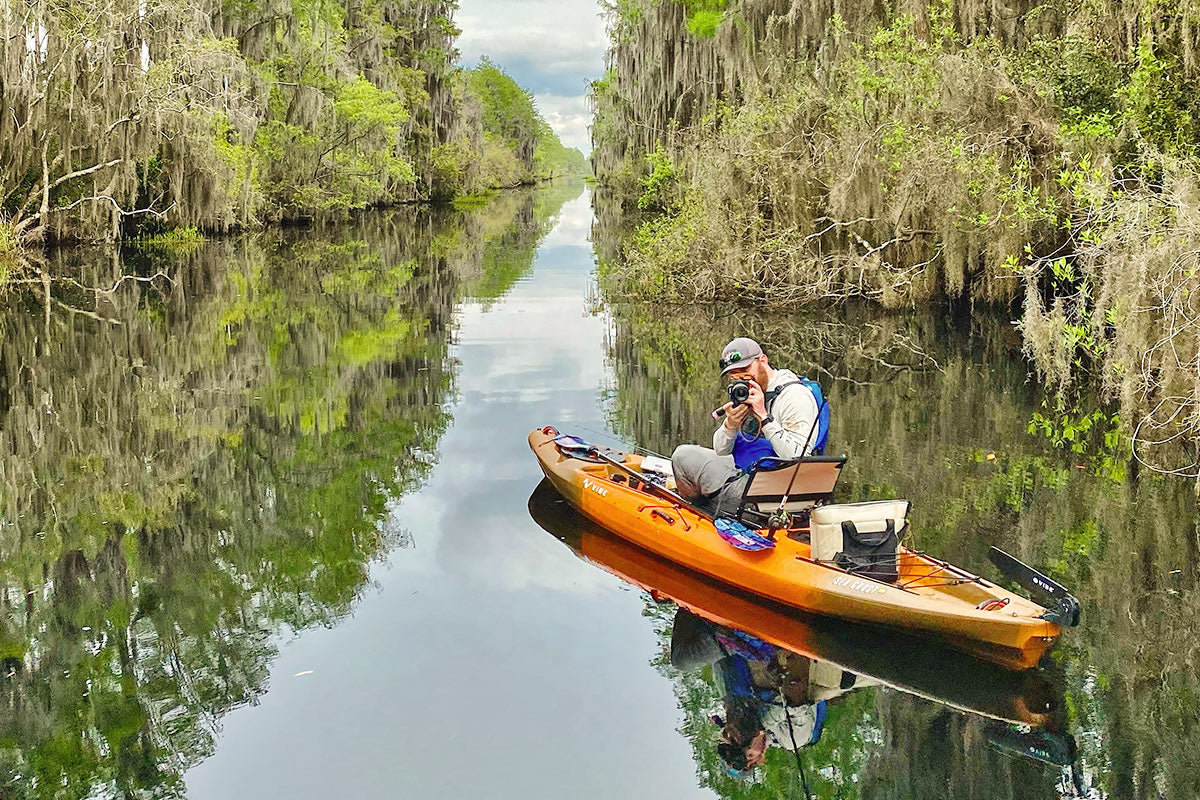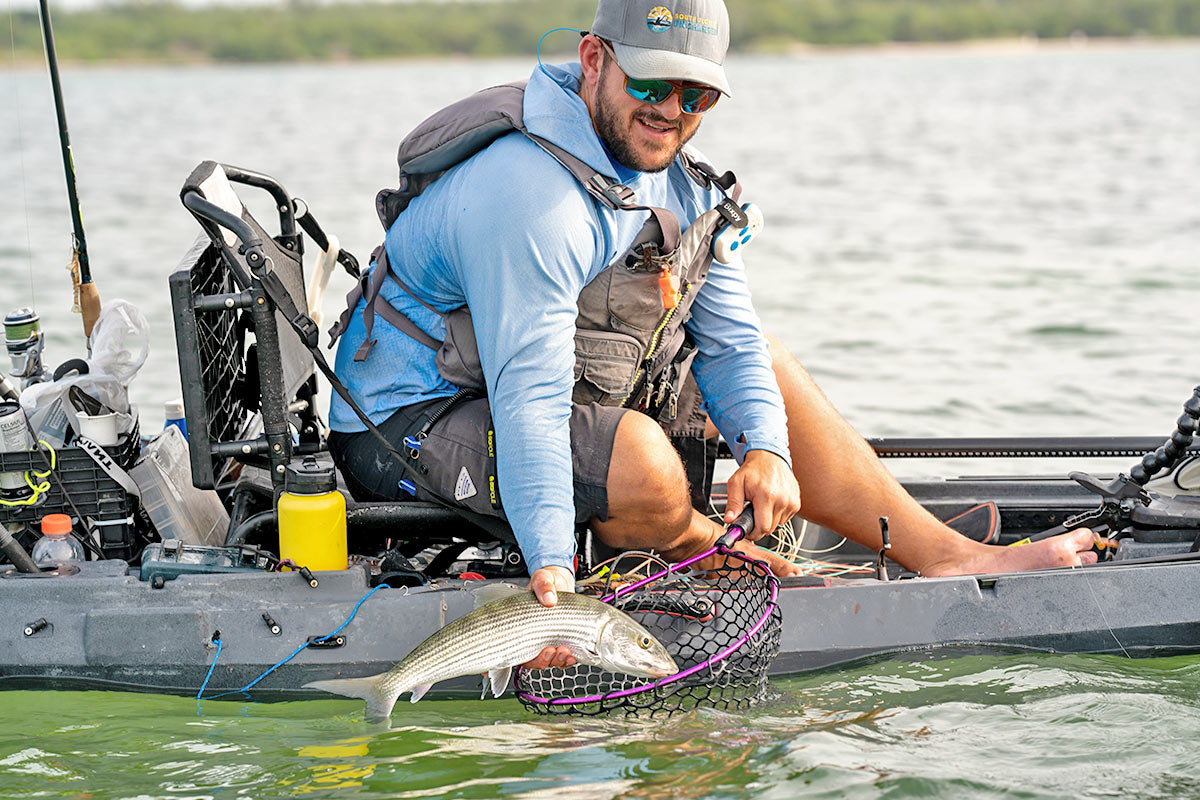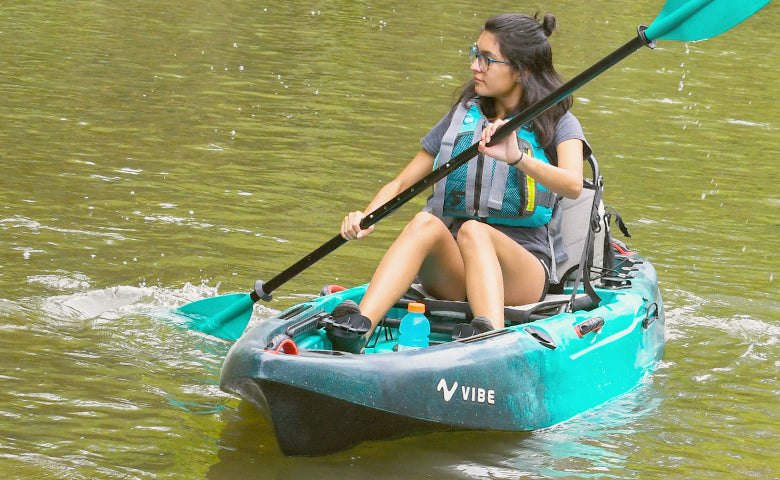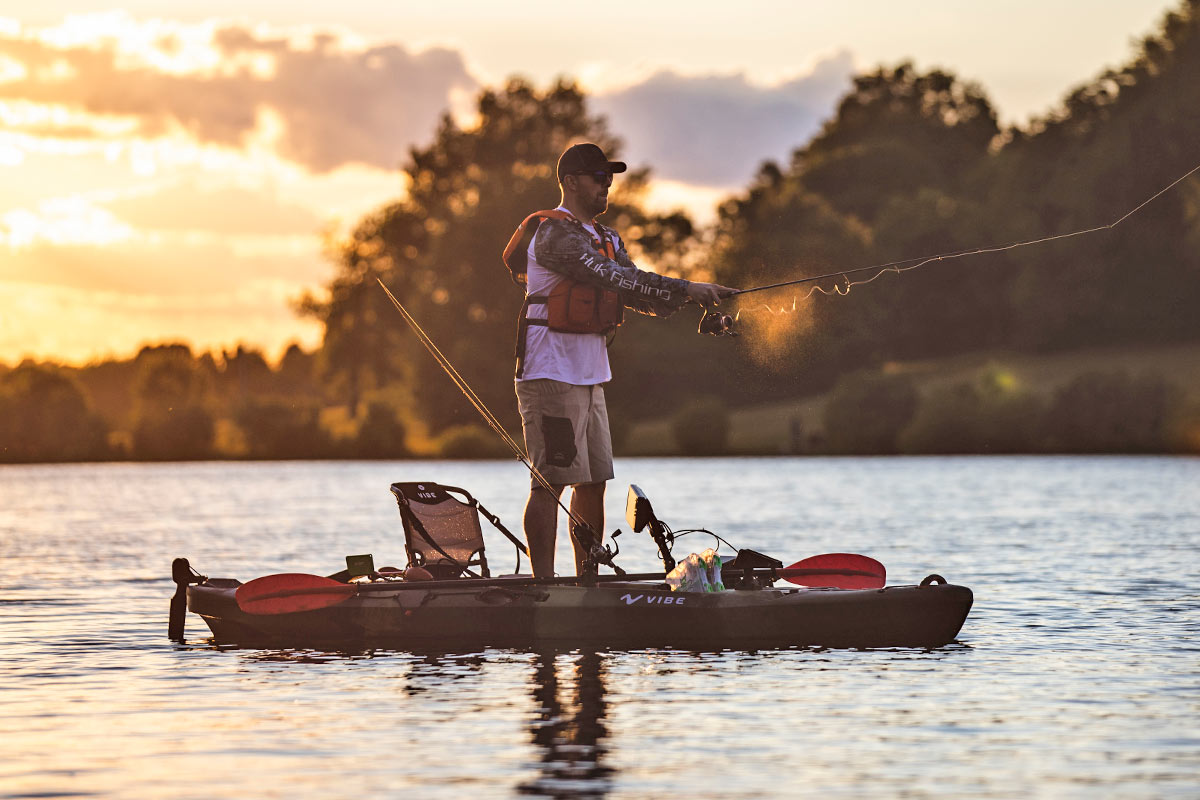How to Take Better Pictures While Kayaking

Right now is the best time to ensure your summer becomes the most memorable ever by grabbing that kayak and your camera or phone, and getting out on the water – because kayak fishing and photography go hand-in-hand when it comes to life's very best memories.
But since 99% of us are prone to Murphy and his Laws, first thing is make sure you grab "insurance" against your phone or camera taking a plunge.
Whether you're "up north" and want to squeeze those last handful of weekends into the best summer ever before you get off the water, or "down south" knowing you have a few more months, right now is the time to create and capture memories that you'll be able to look back upon if you've taken some great photos of those early morning or late afternoon glassy waters, those laughs and loves with paddle or rod in hand, or those catches that prove your epic battles.
Better kayak photography is the key to making this the best summer in memory.
While most snapshots do a decent job of documenting a sweet trip, why not up the ante and try to take better photographs over the next few weeks or months out on the water?
Shooting better is not as complicated as one might think, and if you use these key tips to improve your kayak and fishing photography skills, you’ll be outshooting your buddies in no time. And everyone knows that bragging rights for trophy catches must be accompanied by photographic proof.
Check Your Camera / Phone Before You Head-Out
First things, first: Check to make sure your camera or phone is ready for your outing.
Do you have battery power? Are your memory cards erased or you have enough storage space – especially if you want to take video? Check to make sure the camera is not still switched to the “indoor light” settings. There have been numerous occasions where the first great shot of any trip is ruined because the settings were wrong for the occasion.
Stay Hydrated – The Most Important Piece Of Gear
Something all pro shooters and anglers keep in mind, is it's easy to forget to stay hydrated. Always make sure to pack a good cooler or beverage tumbler.
Camera Mounts Are Key – So You Can Keep Your Hands Free For A Paddle, Rod, Or Another Camera
If you want the best memories captured on the water, you really need to invest a few dollars in at least one inexpensive camera mount.
As you'll read below, to capture emotions at just the right time with your camera, shooting position is critical and that means having a mount for your phone or other type of camera GoPro, DSLR, etc).
Have Your Camera Accessible – Bungee Tether, Waterproof Phone Bag & Mounts
Mounts, as well as simple waterproof case tethers for your phone and/or camera not only mean safety so your camera doesn't end up at the bottom of the lake, river or ocean, it also means you don't have to dig under your fishing gear, or lunch, or jacket to find your camera. Easily worth the money for protecting your camera or phone.
Too many times the best shot of your day is lost because you couldn't find your camera quickly and safely.
Take A Few Minutes To Get To Know Your Camera Better
Most people never take their camera off “auto,” which is a shame – or those who never bother to learn what they can do with their phone cameras, especially the higher-end phones with awesome cameras. Take a few minutes to read up on your camera and its settings – whether it's on your phone or a specific point-and-shoot camera.
Pro Tip: If you're using a point-and-shoot camera = Use your "macro" setting. Most point-and-shoots have amazing macro capabilities that are never utilized. On most cameras, the icon for this setting is a little flower. This will allow you to fill the frame of your picture with a fish’s eye, unique markings, the lure you used, or the lure sticking out of the fish’s mouth.
Lighting & Subject Matter
Photography is all about lighting and subject matter, and few places in the world deliver as amazing images as being on the water and out in nature. Dawn and dusk offer some of the best light and are also the best time to capture wildlife images as animals are most active at first and last light, and that includes fish.
It's always about allowing enough light to enter the camera to capture the image – whether using a phone's camera or a DSLR camera – which is a balancing act between shutter speed, ISO, and aperture. A fast shutter speed is necessary to stop action, but in low light conditions, a fast shutter speed may not allow enough light in.
Having the aperture wide open (lowest number) may not give enough depth of field to have everything in focus if you have objects closer (such as the stern of your kayak) and further away (such as other paddlers or a deer on the shoreline).
Try to avoid photographing mid-day, as the light tends to be less contrasted (shadows), resulting in less exciting images. Sun damage is also a problem when you're out, so make sure you are wearing a Sun Jammer or at least a UV-resistant performance shirts.
Having a favorite brimmed hat and polarized sunglasses will also keep the sun out of your eyes and let you see further and sharper on the water.
Be Steady
This goes back to the importance of a camera mount. Be steady: Take a breath and hold it while you shoot. The reason most wildlife and kayaking shots don’t turn out is that the camera moved during the photo, producing a bit of blurring or fuzziness. Many people blame this on the camera or lens, but it is almost always the photographer who is to blame.
Be especially aware of this during low light situations.
To get higher shots and vantage points, a simple inexpensive stand-up assist strap attached to your kayak will allow you to stand and shoot – if your kayak has a wider and longer hull for increased stability such as a Shearwater 125 or Yellowfin 120 or a Sea Ghost 130 or even the hybrid SUP Cubera 120.
Capturing Emotions
Emotion is a powerful communicator. It conveys what a person may be feeling, but also tells a story – and that can be through 'selfies' or shooting someone else. On adventure trips, this tends to be relatively easy in the evenings while relaxing on shore or in camp, reliving the experiences of the day together. Keep that camera or phone handy to capture these special moments.
Expressions captured while navigating an action-filled portion of a river or while casting may show concentration or excitement, joy or frustration. To capture emotions at just the right time with your camera, shooting position is critical – as well as having one or more good camera mounts, so that you can keep your hands on your paddle or rod.
Positioning & Focus
Positioning is especially important if you are shooting other people, as you not only have to worry about lighting conditions, but also making sure you have the time to capture the right photo composition. If you have a type of photo in mind with a specific backdrop or action taking place, ask your fellow paddlers to give you 5 minutes to set up at the spot you want to take the picture from. Situate yourself low to the water with the sun behind you. If you are using an actual camera, set the camera in Manual mode and control shutter speed, aperture, and ISO settings. FYI, the camera's lens aperture (f-stop) a few clicks above the widest opening will allow for more depth-of-field when focusing.
Pro Tip: Make the fish “pop”: Use your longest zoom setting (without using digital zoom). Without going into the technical details, this “stacks” the image compressing space. Typically this will throw your background into a soft focus, drawing the viewer’s eyes to the subject.
Look For Visual "Distractions"
Always, always, always look for distractions in the photo composition when you are looking through the lens.
This is harder to do than one might think. It’s a practiced skill, but will vastly improve your images. For example, don’t let your buddy’s fishing rod hover into your shot from out of nowhere, or a tree "sticking out of your head" on a selfie. Isolating your subject matter without all the distractions in the background will improve the overall composition of the shot.
Be Stealthy And Slow Down
Stealthy and slow is key to all successful catching – whether for a fish or for a good photograph. This not only helps your fishing, but your photography, too.
Put your rod air paddle down and decide where you want to be and where the light will be (positioning and lighting). Taking the time to set up your shot (subject matter, steadiness, avoiding visual distractions and focus) will allow you see and take epic photographs of some amazing things while out on the river, lake or ocean. Holding fish don’t dart away, eating fish continue to eat, birds don’t flush and spook fish. Some of the hardest shots to get are fish underwater photographed from above or a fish eating a specific fly.
Going slow and concentrating on using all these aforementioned skills tips will give you images of your best summer ever.
Don't settle for the same ole' Grin-and-grip photos in these last few weeks of the season – make your best memories right now by getting your kayak and taking better photos, so you have the best memories to visit over and over, and share again and again!




